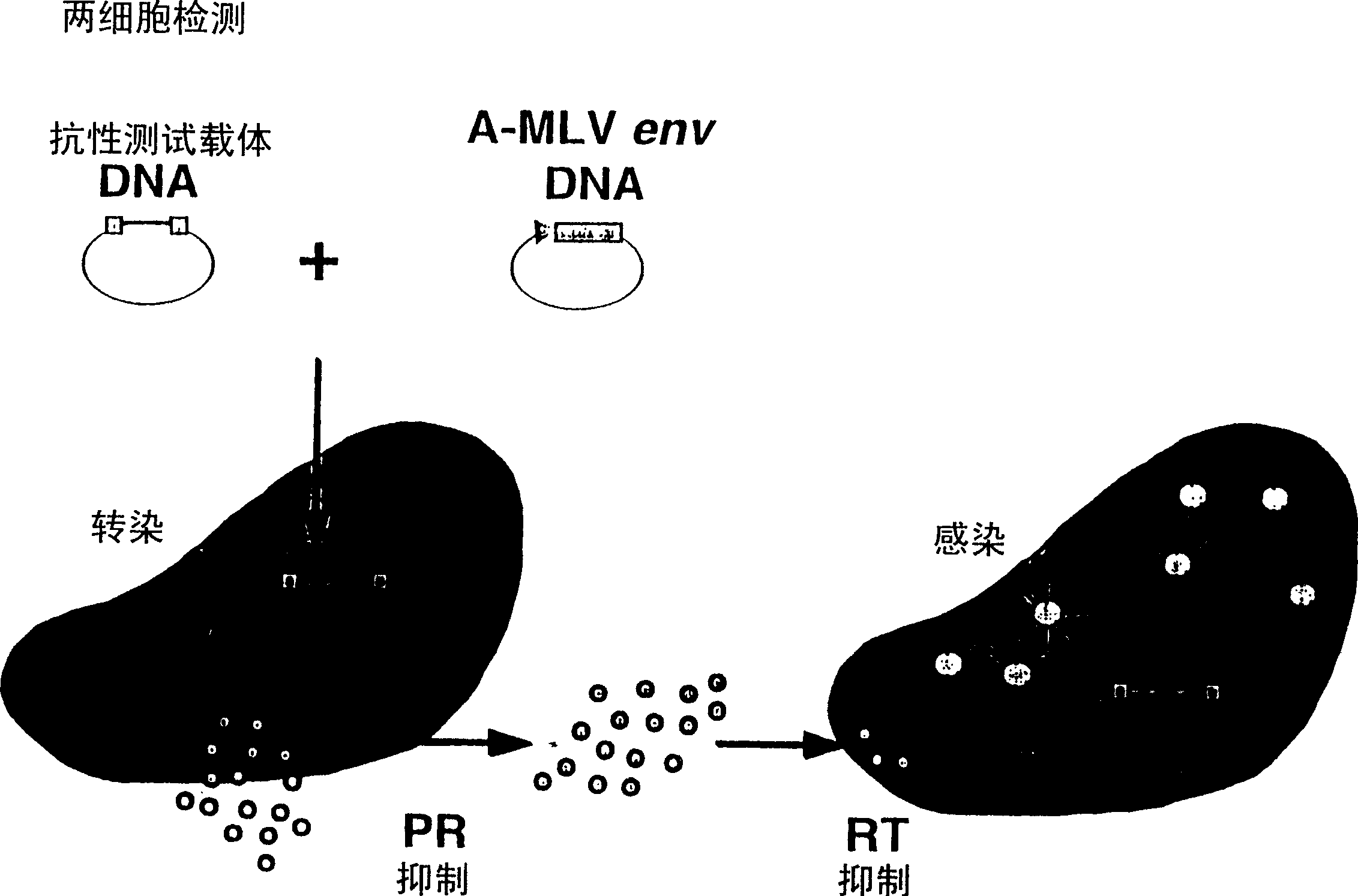Path and method for monitoring non nucleotide reverse transcriptive enzyme inhibitor anti retrovirus therapy
A technology of anti-retrovirus and reverse transcriptase inhibition, which is applied in biochemical equipment and methods, measurement/testing of microorganisms, recombinant DNA technology, etc., and can solve problems such as inappropriate sensitivity, reduced resistance, mutation, etc.
- Summary
- Abstract
- Description
- Claims
- Application Information
AI Technical Summary
Problems solved by technology
Method used
Image
Examples
Embodiment 1
[0132] Determination of drug phenotypic sensitivity and resistance using resistance test vehicle
[0133] The methods and methods described in the PCT International Application (Application No. PCT / US / 01609, application date January 29, 1997) were used to conduct drug phenotypic sensitivity and resistance tests.
[0134] There is a segment from the patient (PDS) in these trials. This fragment is either a fragment of viral RNA isolated from viral particles in the serum of HIV patients, and then amplified from viral RNA by reverse transcription-polymerase chain reaction; or a paternal clone of resistance test vector DNA Site-directed mutagenesis was performed to obtain a wild-type HIV-1 mutant. This segment from the patient corresponds to the HIV protease and reverse transcriptase regions. Viral RNA is isolated using standard operating procedures, such as RNAgents Total RNA Isolation System (Promagnet, Madison, Wisconsin, USA) or RNAzol (Tail-Tester, Flanders, Texas, USA). The rever...
Embodiment 2
[0143] Example 2: Analyze genotype to establish the correlation between genotype and phenotype sensitivity
[0144] Phenotypic sensitivity analysis of patients' HIV samples
[0145] The resistance test vector was constructed as described in Example 1. Resistance test vectors or clones from the resistance test vector library are subjected to phenotypic sensitivity tests to accurately and quantitatively determine the sensitivity level of a series of antiretroviral drugs. This group of antiretroviral drugs may include the so-called nucleotide reverse transcriptase inhibitors (NRTIs), non-nucleotide reverse transcriptase inhibitors (NNRTIs) and protease inhibitors (PRIs). If new drugs or new drug targets are available, this group of drugs can be expanded. On each resistant vector library, determine the IC50 of each test drug. Compare the sensitivity models of all tested drugs with known sensitivity models. Further examination of patient samples can be performed to identify genotypic c...
Embodiment 3
[0151] Establish the correlation between P225H genotype analysis and phenotypic sensitivity
[0152] Phenotype analysis of patients 97-302
[0153] The resistance test vector was constructed using patient 97-302 samples as described in Example 1. The patient has been treated with d4T, indinavir and DMP-226 for approximately 10 months. Isolate the viral RNA and perform reverse transcription-PCR to amplify a fragment from the patient. This fragment includes a viral fragment encoding the full length of the protease and reverse transcriptase 1-313 amino acids. The fragment was inserted into a viral vector with a reporter gene, and the resistance test vector was named RTV-302. Use phenotypic sensitivity test to accurately and quantitatively determine the sensitivity level of RTV-302 to a series of antiretroviral drugs. These drugs include the said NRTI drugs (AZT, 3TC, d4T, ddI, ddC), NNRTIs (delafurdine, nefurapine) and PRIs (indinavir, nelfinavir, ritonavir, saquinavir). Determine th...
PUM
 Login to View More
Login to View More Abstract
Description
Claims
Application Information
 Login to View More
Login to View More - R&D
- Intellectual Property
- Life Sciences
- Materials
- Tech Scout
- Unparalleled Data Quality
- Higher Quality Content
- 60% Fewer Hallucinations
Browse by: Latest US Patents, China's latest patents, Technical Efficacy Thesaurus, Application Domain, Technology Topic, Popular Technical Reports.
© 2025 PatSnap. All rights reserved.Legal|Privacy policy|Modern Slavery Act Transparency Statement|Sitemap|About US| Contact US: help@patsnap.com



